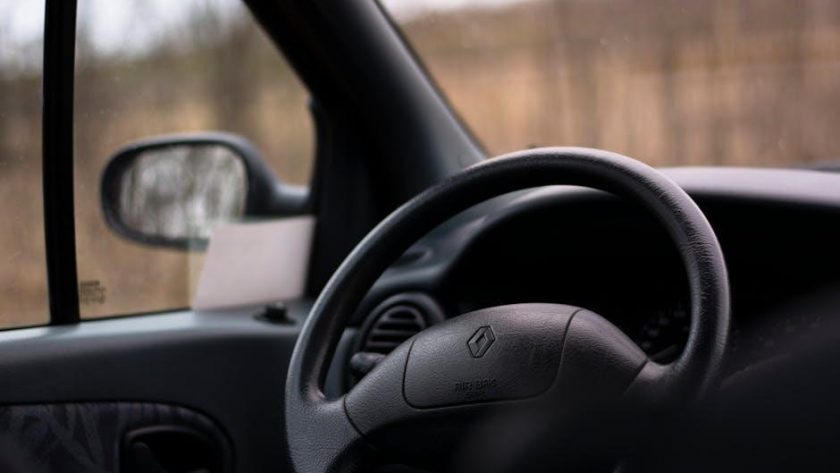Oregon Drivers Manual 2024: A Comprehensive Guide
This guide provides essential information for Oregon drivers, covering laws, safe practices, and DMV testing procedures․
It’s based on the 2024 manual,
including recent updates and clarifications regarding traffic regulations․
The 2024 Oregon Drivers Manual serves as a vital resource for all drivers, whether new or experienced․ It’s designed to prepare individuals for Oregon’s licensing tests, offering a concise overview of the state’s rules of the road and promoting safe driving habits․ Recent discussions on platforms like Reddit highlight potential discrepancies between manual instructions and actual state law, particularly concerning turns from parking or bike lanes․
The manual, available through the Oregon Department of Transportation, aims to ensure drivers understand their responsibilities and navigate Oregon’s roadways safely․ It’s a continually updated document, reflecting changes in legislation and best practices․
Where to Find the Official Manual
The official 2024 Oregon Drivers Manual is readily accessible through several channels․ The primary source is the Oregon Department of Transportation (ODOT) website, oregon․gov/odot, where a downloadable PDF version is available․
Additionally, physical copies may be obtainable at Oregon DMV offices․ Amazon․com also offers a printed version (ISBN: 9798342077255)․ Online discussions confirm the ODOT website provides the most current and authoritative information․ Ensuring you’re using the official manual is crucial for accurate test preparation and understanding Oregon’s driving laws․
Key Updates and Changes in the 2024 Edition
Recent discussions on Reddit highlight a key area of change: right turns from parking or bike lanes․ The 2024 manual initially presented instructions differing from established state law, advising against merging into these lanes․ However, clarification indicates Oregon follows the national standard, permitting merging for safe right turns․
This update addresses a point of confusion raised by drivers․ The manual aims to reflect current legislation and best practices, ensuring drivers are well-informed․ Staying updated with these changes is vital for safe and legal operation on Oregon roads․

Understanding Oregon Traffic Laws
Oregon traffic laws encompass right-of-way, speed limits, lane usage, and turning regulations, all detailed in the 2024 manual for driver safety․
Right-of-Way Rules in Oregon
Oregon’s right-of-way rules prioritize safety and predictable traffic flow․ Generally, vehicles must yield to pedestrians and cyclists, especially in crosswalks․ Intersections require careful consideration; drivers arriving first typically proceed, yielding to those approaching from the right when arriving simultaneously․
Turning left requires yielding to oncoming traffic․ The 2024 Oregon Driver Manual emphasizes understanding these rules, particularly concerning bike lanes, where merging incorrectly can be a violation․ Always exercise caution and be prepared to yield, even when legally possessing the right-of-way, to avoid collisions․
Speed Limits and Regulations
Oregon’s speed limits vary based on road type and location․ Generally, urban areas have lower limits (25 mph is common), while highways allow for higher speeds, often 55-65 mph․ The 2024 manual stresses adjusting speed for weather conditions – reducing it during rain, snow, or fog․
Drivers must adhere to posted speed limits and exercise caution․ Oregon law also addresses “basic speed law,” requiring drivers to travel at a speed safe for conditions, regardless of the posted limit․ Ignoring these regulations can lead to citations and increased risk of accidents․
Lane Usage and Merging
Oregon’s lane usage rules prioritize safety and efficiency․ The left lane is generally for passing, with drivers expected to return to the right lane when complete․ Merging requires careful signaling and yielding to traffic flow․ Recent discussions highlight potential discrepancies between manual instructions and state law regarding merging into bike lanes for right turns․
Drivers should avoid unnecessary lane changes and maintain a consistent speed․ The 2024 manual emphasizes awareness of all lanes, especially when merging onto highways or navigating congested areas․ Proper lane discipline minimizes congestion and reduces accident risk․
Turning Regulations – Including Bike Lane Considerations
Oregon’s turning regulations demand clear signaling and yielding to pedestrians and oncoming traffic․ A key point of discussion, highlighted on Reddit, concerns right turns from roadways into bike lanes․ The 2024 manual initially advised against merging into bike lanes for turns, contradicting some interpretations of state law․
Current guidance stresses caution and awareness of cyclists․ Drivers must ensure a safe turning path without encroaching on bike lanes unless absolutely necessary and legally permissible․ Understanding these nuances is crucial for safe and compliant driving in Oregon․
Passing and Overtaking Procedures
Oregon’s rules for passing and overtaking prioritize safety and require careful judgment․ Drivers must signal intentions clearly and ensure sufficient space before maneuvering․ Passing is generally permitted on the left, but only when safe and unobstructed by oncoming traffic or road conditions․
The 2024 manual emphasizes maintaining a safe following distance and avoiding aggressive driving․ Overtaking in designated zones, like those near schools, is often restricted․ Always return to the original lane promptly after completing a pass, ensuring the maneuver is executed safely․

Driving Under the Influence (DUI)
Oregon’s DUI laws are strict, with severe penalties for impaired driving․ The 2024 manual details legal limits, implied consent, and sobriety checkpoint procedures․
Oregon’s DUI Laws and Penalties
Oregon law defines driving under the influence (DUI) based on a blood alcohol content (BAC) of ․08% or higher, or impaired driving due to drugs․ Penalties escalate with each offense,
ranging from fines and license suspension to mandatory alcohol assessment and potential jail time․
First-time offenders may face a minimum fine, license suspension, and alcohol education․ Repeat offenses carry significantly harsher consequences, including extended jail sentences and felony charges․ The 2024 Oregon Driver Manual provides detailed information on these penalties, emphasizing the serious nature of DUI offenses and the importance of responsible driving․
Implied Consent Laws
Oregon’s Implied Consent Law means that by operating a vehicle on public roads, drivers automatically consent to chemical tests—breath, blood, or urine—if lawfully arrested for DUI․ Refusal to submit to testing results in immediate license suspension, separate from any DUI conviction․
The 2024 Oregon Driver Manual clarifies that this consent is “implied,” not explicitly given, but is a condition of driving privileges․ Understanding these laws is crucial, as refusing a test carries penalties even if you are not ultimately found guilty of DUI․
Sobriety Checkpoints
Oregon law permits law enforcement to conduct sobriety checkpoints to deter impaired driving․ These checkpoints are established at predetermined locations and times, aiming to identify drivers under the influence of alcohol or drugs․ The 2024 Oregon Driver Manual doesn’t detail specific checkpoint locations,
but emphasizes drivers must be prepared to provide identification and submit to questioning if approached․ Checkpoints are conducted following specific guidelines to ensure fairness and minimize disruption, focusing on public safety and reducing DUI-related incidents․

Vehicle Registration and Insurance
Oregon requires vehicle registration and minimum liability insurance for all drivers․ The 2024 manual details requirements, acceptable proof, and renewal processes for legal operation․
Oregon Vehicle Registration Requirements
Registering your vehicle in Oregon is crucial for legal operation․ The Oregon Driver Manual outlines specific documentation needed, including proof of ownership – title or Manufacturer’s Statement of Origin․
You’ll also require identification and potentially an odometer disclosure statement․
Registration fees vary based on vehicle type, weight, and age․ New residents have a limited timeframe to register their vehicles upon establishing residency․
The DMV website provides detailed instructions and online registration options, streamlining the process for Oregon drivers․
Minimum Insurance Coverage
Oregon law mandates minimum liability insurance coverage for all registered vehicles․ This includes bodily injury liability, covering costs if you injure another person, and property damage liability, for damage to another’s vehicle or property․
The current minimums are $25,000 per person/$50,000 per accident for bodily injury and $20,000 for property damage․ Drivers can opt for higher coverage levels for increased protection․ Proof of insurance must be readily available when requested by law enforcement, ensuring compliance with Oregon regulations․
Acceptable Proof of Insurance
Oregon drivers must carry proof of insurance while operating a vehicle; Acceptable forms include a current insurance card issued by your provider, a digital image of the card on a mobile device, or a printed copy of your insurance policy declarations page․
The documentation must clearly display the policy number, effective dates, and coverage amounts․ Ensure the information is current and readily accessible during traffic stops or when requested by law enforcement officials, avoiding potential penalties․

Safe Driving Practices
Oregon’s manual emphasizes defensive driving, avoiding distractions, and preventing drowsy driving․ Maintaining proper following distance and space management are crucial for safety․
Defensive Driving Techniques
The Oregon Driver Manual strongly advocates for proactive driving strategies․ Anticipate potential hazards, maintain situational awareness, and always scan the road ahead․
Be prepared to react to unexpected events, like sudden stops or lane changes by other vehicles․
Effective defensive driving includes minimizing distractions – put away phones and avoid eating while driving․
Maintain a safe following distance, allowing ample time to react․
Regularly check mirrors and be aware of your surroundings․
Prioritize predictability and communicate your intentions clearly to other drivers․
Distracted Driving Laws
Oregon law strictly prohibits the use of handheld cell phones while driving․ This includes texting, emailing, or browsing the internet․ Hands-free devices are permitted, but drivers must remain focused on the road․
The Oregon Driver Manual emphasizes that any activity diverting attention from driving is considered distracted driving․
Penalties for distracted driving violations can include fines․
Beyond cell phone use, distractions like eating, adjusting the radio, or interacting with passengers can also lead to accidents․
Prioritize safe driving by eliminating all potential distractions before starting your journey․
Drowsy Driving Prevention
The Oregon Driver Manual highlights the dangers of driving while fatigued, equating it to driving under the influence․ Recognizing the signs of drowsiness – frequent yawning, difficulty focusing, and drifting lanes – is crucial․ Before a long trip, ensure adequate sleep; at least seven to eight hours is recommended․
If fatigue sets in during a drive, pull over to a safe location and rest․
Consider sharing driving duties with another licensed driver․ Avoid driving during peak sleepiness hours, and be mindful of medications that cause drowsiness․ Prioritize rest for a safe journey․
Following Distance and Space Management
The Oregon Driver Manual emphasizes maintaining a safe following distance, recommending the “three-second rule” under ideal conditions․ Increase this distance in adverse weather or when following larger vehicles․ Effective space management involves scanning the road ahead, anticipating potential hazards, and maintaining a buffer zone around your vehicle․
Avoid tailgating, as it reduces reaction time and increases the risk of a collision․ Be aware of blind spots and use mirrors frequently․ Adjust speed and position to create adequate space, promoting a safer driving environment for yourself and others on the road․

Specific Driving Situations
The manual details safe practices for challenging conditions like adverse weather, highways, and work zones,
emphasizing caution and awareness for all Oregon drivers․
Driving in Adverse Weather Conditions
Oregon’s diverse climate demands preparedness for rain, snow, and fog․ The 2024 manual stresses reducing speed significantly in inclement weather, increasing following distance, and ensuring headlights are on․ Drivers should avoid cruise control on slippery roads and be cautious of black ice․
It also advises against sudden braking or steering, and recommends knowing how to regain control if skidding․ The manual highlights the importance of checking road conditions before traveling and being prepared for potential delays or closures due to weather-related hazards․
Highway Driving Safety
The 2024 Oregon Driver Manual emphasizes maintaining a consistent speed and staying aware of surrounding traffic on highways․ It advises drivers to merge smoothly, use turn signals well in advance, and avoid weaving between lanes․ Maintaining a safe following distance is crucial, especially with larger vehicles․
The manual also details proper lane positioning and the dangers of distracted driving at highway speeds․ Drivers should be prepared for sudden stops and be vigilant for wildlife crossings․ Regular vehicle maintenance is highlighted as essential for safe highway travel․
Work Zone Safety
The 2024 Oregon Driver Manual stresses heightened awareness and caution when approaching work zones․ Drivers must obey posted speed limits, which are often reduced, and be prepared for lane closures, flaggers, and uneven road surfaces․ Expect the unexpected and maintain a safe following distance․
The manual emphasizes the importance of minimizing distractions and avoiding aggressive driving behaviors in work zones․ Fines are often doubled for traffic violations within these areas․ Protecting road workers is paramount; always move over if safe to do so․
Emergency Vehicle Procedures
The 2024 Oregon Driver Manual details proper responses to emergency vehicles․ Upon seeing or hearing an approaching emergency vehicle with lights and sirens activated, drivers must immediately yield the right-of-way․ Safely pull over to the right side of the road and stop․
Remain stopped until the emergency vehicle has passed․ Do not follow too closely or impede its progress․ The manual clarifies procedures for intersections and divided highways, emphasizing safety for both drivers and emergency responders․ Prioritize allowing them swift and unobstructed passage․

Motorcycle Operation in Oregon
The manual outlines specific licensing, safety gear, and operational laws for motorcycles in Oregon, ensuring rider safety and compliance with state regulations․
Motorcycle Licensing Requirements
Oregon requires a motorcycle endorsement added to a valid driver’s license․ Applicants must pass a knowledge test specifically covering motorcycle operation and safety regulations, as detailed in the 2024 Oregon Driver Manual․ A skills test is also mandatory, demonstrating proficiency in controlling a motorcycle and executing maneuvers safely․
New riders may complete an approved motorcycle safety course, potentially waiving the skills test requirement․ Proper documentation, including identification and proof of license, is essential during the application process․ The DMV website provides a comprehensive list of requirements and necessary forms for obtaining a motorcycle endorsement․
Motorcycle Safety Gear
Oregon law mandates helmet use for all motorcycle riders and passengers under the age of 18․ However, the 2024 Oregon Driver Manual strongly recommends all riders wear DOT-approved helmets, regardless of age, for optimal protection․ Eye protection, such as goggles or a face shield, is also crucial to shield against debris and wind․
Protective clothing, including jackets, gloves, long pants, and sturdy footwear, significantly reduces injury risk during a crash․ Brightly colored or reflective gear enhances visibility to other motorists, improving safety․ Prioritizing appropriate safety gear is a vital component of responsible motorcycle operation․
Specific Motorcycle Laws
Oregon’s motorcycle laws address lane splitting, which remains illegal․ Riders must possess a motorcycle endorsement to operate a motorcycle legally․ The 2024 manual details requirements for proper signaling, braking, and turning procedures specific to motorcycles․ It also clarifies rules regarding carrying passengers and operating with cargo․
Motorcycle operators must adhere to all standard traffic laws, alongside these specific regulations․ Understanding these laws is crucial for safe and lawful motorcycle operation within Oregon․ Failure to comply can result in citations and jeopardize rider safety․

Pedestrian and Bicycle Safety
Oregon law prioritizes pedestrian and cyclist safety, requiring drivers to yield the right-of-way․
The manual emphasizes sharing roads responsibly and being aware of vulnerable users․
Pedestrian Right-of-Way
Oregon’s pedestrian right-of-way laws are crucial for safe roadways․ Drivers must yield to pedestrians in crosswalks, marked or unmarked, and intersections․
This includes stopping for pedestrians who have started crossing, even if the signal changes․
Be especially cautious near schools, parks, and residential areas where pedestrian traffic is higher․
Pedestrians have the right-of-way even when crossing outside of designated crosswalks, requiring drivers to exercise due care․
Always anticipate pedestrian movements and be prepared to stop․
Bicycle Laws and Safety
Oregon law treats bicyclists as vehicle operators, granting them rights and responsibilities on roadways․
Drivers must share the road and maintain a safe distance when passing cyclists – at least three feet is required․
Bicyclists are required to follow traffic laws, including signaling turns and stopping at red lights and stop signs․
Using bike lanes when available is encouraged, but not always mandatory․
Awareness and mutual respect between drivers and cyclists are vital for preventing accidents․
Sharing the Road with Vulnerable Users
Oregon prioritizes the safety of vulnerable road users – pedestrians, cyclists, and motorcyclists․ Drivers must exercise increased caution and awareness around these individuals․
This includes scanning for them, especially at intersections and in low-light conditions․
Maintaining a safe following distance and reducing speed are crucial when approaching vulnerable users․
Be prepared to yield the right-of-way and avoid aggressive driving behaviors․
Respectful road sharing minimizes risks and promotes a safer environment for everyone․

Oregon DMV Testing Information
Passing Oregon’s tests requires knowledge of this manual․ Expect a written exam and a skills test, bringing required documentation for successful licensing․
Written Knowledge Test
The Oregon DMV’s written knowledge test assesses your understanding of traffic laws, road signs, and safe driving practices as detailed in the current driver manual․ Preparation is key; thoroughly study the manual to familiarize yourself with Oregon-specific regulations․ The test consists of multiple-choice questions, and a passing score is required to proceed to the driving skills test․
Review the manual’s sections on right-of-way, speed limits, and DUI laws, as these are frequently covered․ Practice tests are available online to help gauge your readiness and identify areas needing further study․ Ensure you understand the implications of implied consent laws as well․
Driving Skills Test
Oregon’s driving skills test evaluates your ability to safely operate a vehicle in real-world traffic conditions․ An examiner will assess your adherence to traffic laws, proper vehicle control, and overall driving competence․ Expect to demonstrate skills like lane changes, turns, merging, and parking․
Prior to the test, ensure your vehicle is legally registered, insured, and in good working order․ Practice defensive driving techniques and be mindful of pedestrians and cyclists․ A calm and focused demeanor will contribute to a successful evaluation, reflecting your understanding of safe driving practices․
Required Documents for Testing
To complete the Oregon DMV testing process, gather essential documentation beforehand․ You’ll need proof of identity, such as a certified birth certificate or valid passport; Verification of Oregon residency, like a utility bill or lease agreement, is also required․
Additionally, bring your Social Security card or documentation․ If applying for a commercial driver’s license, specific endorsements may necessitate further paperwork․ Ensure all documents are original or certified copies to avoid delays during the application process․

Resources and Contact Information
Access the Oregon DMV website for the official manual, downloadable PDFs, and office locations․ Contact information and hours are readily available online for assistance․
Oregon DMV Website
The official Oregon Department of Motor Vehicles (DMV) website, located at Oregon․gov/ODOT, serves as a central hub for all driver-related information․ Here, you can directly access the latest version of the Oregon Driver Manual in a convenient, searchable PDF format․
Beyond the manual, the website provides details on vehicle registration, licensing requirements, insurance guidelines, and testing procedures․ It also features online services for address changes, renewals, and appointment scheduling․ Regularly checking the DMV website ensures you have the most current and accurate information regarding Oregon’s driving laws and regulations․
Oregon Driver Manual PDF Download
A downloadable PDF version of the 2024 Oregon Driver Manual is readily available through the Oregon Department of Transportation (ODOT) website․ This allows for offline access, making it ideal for studying without an internet connection․ The PDF format preserves the manual’s original layout and content, ensuring a consistent learning experience․
You can find the direct link on Oregon․gov/ODOT under the DMV section․ Downloading the PDF enables convenient printing or viewing on various devices, supporting effective preparation for Oregon’s knowledge and skills tests․ Ensure you are using the most recent version for accurate information․
DMV Office Locations and Hours
Oregon DMV offices are strategically located throughout the state to provide accessible services to all residents․ To find the nearest office and its specific operating hours, utilize the official Oregon DMV website’s office locator tool․ This tool allows filtering by city or zip code for precise results․
Hours of operation vary by location, with some offering appointments and others operating on a walk-in basis․ Checking the website before visiting is highly recommended to avoid potential delays․ The DMV website provides up-to-date information regarding holiday closures and any temporary service adjustments․

